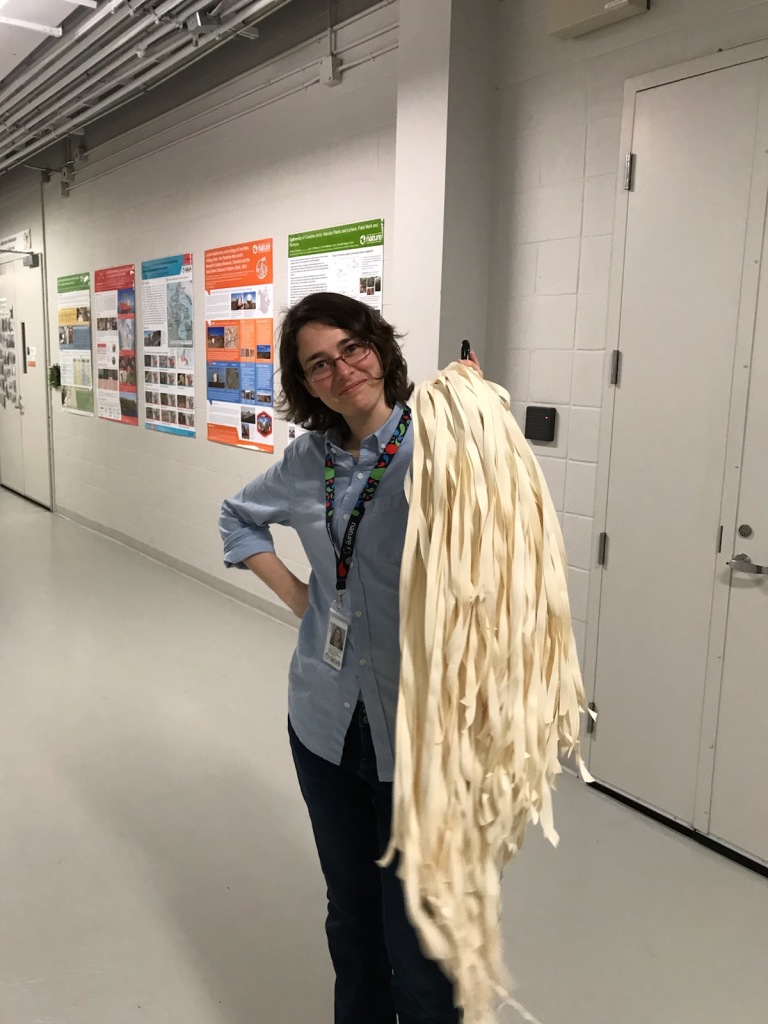Summer is all about growth. In July, you heard about the work happening in Mineralogy to expand their collection. Here, I give you a sneak peek at how the Botany team is handling our own expansion.

The National Herbarium of Canada is the national collection of preserved plants, lichens and algae that have been collected by researchers and amateur naturalists since the 1700s. These verifiable physical specimens, each from a specific place and time, provide crucial reference vouchers that are invaluable for many different kinds of future work.
Currently, the vascular plant collection alone contains over 600,000 specimens. Every year, new research and monitoring activities in Canada and around the world bring in newly donated specimens by the thousands! It’s no surprise, then, that one day the National Herbarium would exceed its storage capacity. By 2019, some cabinets were becoming so full that it was a challenge to file anything new.

What do you do when you need to make more room for a collection without having the luxury of moving to or adding a new building? Our options were: fill in, expand upward, or repurpose existing space. We chose all of the above.

Filling in meant adding more rolling compactor carriages to fit more cabinets and fill our available floor space. Expanding upward meant purchasing new extra-tall cabinets that reach almost to the light fixtures—each of these cabinets can store 1.5 times that of our standard cabinets. Finally, repurposing space meant arranging with our colleagues in the Zoology department to annex—er, graciously request—space in their neighbouring osteology collection. This space will be used to store material that is yet to be formally acquired, which had previously been stored in the same space as the catalogued collection.

In 2020, our herbarium team moved 85 cabinets of material into the new shared botany/osteology space and completed the installation of carriages and cabinets in the herbarium. This extra space gave us the opportunity to not only expand the vascular plant collection to sit more comfortably within all 400 of the cabinets now available for it, but also to rearrange the collection to bring our outdated taxonomic filing system into the 21st Century. Despite pandemic closures and restrictions preventing team members from working in close proximity to one another, the simultaneous expansion and broad reorganization were completed in 2021. In total, over 12,900 shelves of dried plant specimens were moved during these two years.

Twelve thousand nine hundred shelves of material is a lot. Our team learned many things from this project, but if I had to pick one to share, it would be this: trust the numbers, not instinct. The sheer volumes we were working with were larger than my brain can visualize on-the-fly. From the onset, it was clear that using instinct to extrapolate how long something might take, based on a small sample run, was not going to be adequate. This massive project would not have been possible without detailed calculations, inventories, and time budgets.

But we’re not done yet. Over the next two years, we will be working on the finer details of our filing system, like updating the species names on roughly 30,000 specimen folders!
Want to know more about the project and its progress so far? Feel free to leave a question in the comments section, or email questions@nature.ca.
